
Mars, the fourth planet from the Sun, has appeared as a setting in works of fiction since at least the mid-1600s. Trends in the planet's portrayal have largely been influenced by advances in planetary science. It became the most popular celestial object in fiction in the late 1800s, when it became clear that there was no life on the Moon. The predominant genre depicting Mars at the time was utopian fiction. Around the same time, the mistaken belief that there are canals on Mars emerged and made its way into fiction, popularized by Percival Lowell's speculations of an ancient civilization having constructed them. The War of the Worlds, H. G. Wells's novel about an alien invasion of Earth by sinister Martians, was published in 1897 and went on to have a major influence on the science fiction genre.

Sword and sorcery (S&S) or heroic fantasy is a subgenre of fantasy characterized by sword-wielding heroes engaged in exciting and violent adventures. Elements of romance, magic, and the supernatural are also often present. Unlike works of high fantasy, the tales, though dramatic, focus on personal battles rather than world-endangering matters. Sword and sorcery commonly overlaps with heroic fantasy. The genre originated from the early-1930s works of Robert E. Howard. The term "sword and sorcery" was coined by Fritz Leiber in the May 1961 issue of the fantasy fanzine Amra, to describe Howard and the stories that were influenced by his works. In parallel with "sword and sorcery", the term "heroic fantasy" is used, although it is a more loosely defined genre.
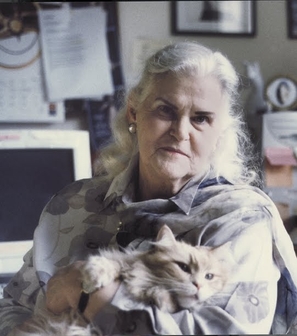
Anne Inez McCaffrey was an American writer known for the Dragonriders of Pern science fiction series. She was the first woman to win a Hugo Award for fiction and the first to win a Nebula Award. Her 1978 novel The White Dragon became one of the first science-fiction books to appear on the New York Times Best Seller list.

Gardner Raymond Dozois was an American science fiction author and editor. He was the founding editor of The Year's Best Science Fiction anthologies (1984–2018) and was editor of Asimov's Science Fiction magazine (1986–2004), garnering multiple Hugo and Locus Awards for those works almost every year. He also won the Nebula Award for Best Short Story twice. He was inducted to the Science Fiction Hall of Fame on June 25, 2011.
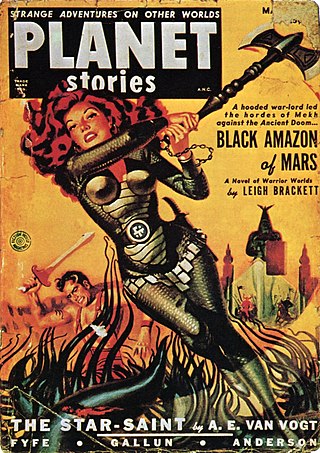
Planet Stories was an American pulp science fiction magazine, published by Fiction House between 1939 and 1955. It featured interplanetary adventures, both in space and on some other planets, and was initially focused on a young readership. Malcolm Reiss was editor or editor-in-chief for all of its 71 issues. Planet Stories was launched at the same time as Planet Comics, the success of which probably helped to fund the early issues of Planet Stories. Planet Stories did not pay well enough to regularly attract the leading science fiction writers of the day, but occasionally obtained work from well-known authors, including Isaac Asimov and Clifford D. Simak. In 1952 Planet Stories published Philip K. Dick's first sale, and printed four more of his stories over the next three years.

The planet Venus has been used as a setting in fiction since before the 19th century. Its opaque cloud cover gave science fiction writers free rein to speculate on conditions at its surface—a "cosmic Rorschach test", in the words of science fiction author Stephen L. Gillett. The planet was often depicted as warmer than Earth but still habitable by humans. Depictions of Venus as a lush, verdant paradise, an oceanic planet, or fetid swampland, often inhabited by dinosaur-like beasts or other monsters, became common in early pulp science fiction, particularly between the 1930s and 1950s. Some other stories portrayed it as a desert, or invented more exotic settings. The absence of a common vision resulted in Venus not developing a coherent fictional mythology, in contrast to the image of Mars in fiction.

Elements of the supernatural and the fantastic were an element of literature from its beginning. The modern genre is distinguished from tales and folklore which contain fantastic elements, first by the acknowledged fictitious nature of the work, and second by the naming of an author. Works in which the marvels were not necessarily believed, or only half-believed, such as the European romances of chivalry and the tales of the Arabian Nights, slowly evolved into works with such traits. Authors like George MacDonald (1824–1905) created the first explicitly fantastic works.
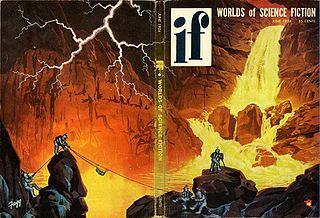
Fictional depictions of Mercury, the innermost planet of the Solar System, have gone through three distinct phases. Before much was known about the planet, it received scant attention. Later, when it was incorrectly believed that it was tidally locked with the Sun creating a permanent dayside and nightside, stories mainly focused on the conditions of the two sides and the narrow region of permanent twilight between. Since that misconception was dispelled in the 1960s, the planet has again received less attention from fiction writers, and stories have largely concentrated on the harsh environmental conditions that come from the planet's proximity to the Sun.

Jupiter, the largest planet in the Solar System, has appeared in works of fiction across several centuries. The way the planet has been depicted has evolved as more has become known about its composition; it was initially portrayed as being entirely solid, later as having a high-pressure atmosphere with a solid surface underneath, and finally as being entirely gaseous. It was a popular setting during the pulp era of science fiction. Life on the planet has variously been depicted as identical to humans, larger versions of humans, and non-human. Non-human life on Jupiter has been portrayed as primitive in some works and more advanced than humans in others.

Saturn has made appearances in fiction since the 1752 novel Micromégas by Voltaire. In the earliest depictions, it was portrayed as having a solid surface rather than its actual gaseous composition. In many of these works, the planet is inhabited by aliens that are usually portrayed as being more advanced than humans. In modern science fiction, the Saturnian atmosphere sometimes hosts floating settlements. The planet is occasionally visited by humans and its rings are sometimes mined for resources.

Pluto has appeared in fiction as a setting since shortly after its 1930 discovery, albeit infrequently. It was initially comparatively popular as it was newly discovered and thought to be the outermost object of the Solar System and made more fictional appearances than either Uranus or Neptune, though still far fewer than other planets. Alien life, sometimes intelligent life and occasionally an entire ecosphere, is a common motif in fictional depictions of Pluto. Human settlement appears only sporadically, but it is often either the starting or finishing point for a tour of the Solar System. It has variously been depicted as an originally extrasolar planet, the remnants of a destroyed planet, or entirely artificial. Its moon Charon has also appeared in a handful of works.

Asteroids have appeared in fiction since at least the late 1800s, the first one—Ceres—having been discovered in 1801. They were initially only used infrequently as writers preferred the planets as settings. The once-popular Phaëton hypothesis, which states that the asteroid belt consists of the remnants of the former fifth planet that existed in an orbit between Mars and Jupiter before somehow being destroyed, has been a recurring theme with various explanations for the planet's destruction proposed. This hypothetical former planet is in science fiction often called "Bodia" in reference to Johann Elert Bode, for whom the since-discredited Titius–Bode law that predicts the planet's existence is named.

Neptune has appeared in fiction since shortly after its 1846 discovery, albeit infrequently. It initially made appearances indirectly—e.g. through its inhabitants—rather than as a setting. The earliest stories set on Neptune itself portrayed it as a rocky planet rather than as having its actual gaseous composition; later works rectified this error. Extraterrestrial life on Neptune is uncommon in fiction, though the exceptions have ranged from humanoids to gaseous lifeforms. Neptune's largest moon Triton has also appeared in fiction, especially in the late 20th century onwards.

Uranus has been used as a setting in works of fiction since shortly after its 1781 discovery, albeit infrequently. The earliest depictions portrayed it as having a solid surface, whereas later stories portrayed it more accurately as a gaseous planet. Its moons have also appeared in a handful of works. Both the planet and its moons have experienced a slight trend of increased representation in fiction over time.
The fictional portrayal of the Solar System has often included planets, moons, and other celestial objects which do not actually exist. Some of these objects were, at one time, seriously considered as hypothetical planets which were either thought to have been observed, or were hypothesized to be orbiting the Sun in order to explain certain celestial phenomena. Often such objects continued to be used in literature long after the hypotheses upon which they were based had been abandoned.
Stars outside of our Solar System and their planets have been featured as settings in works of fiction since at least the 1854 novel Star ou Psi de Cassiopée by C. I. Defontenay, which depicts aliens living in the planetary system around Psi Cassiopeiae. Most of these fictional stars and planets do not vary significantly from the Sun and Earth, respectively. Exceptions include anthropomorphized stars and planets with sentience, planets without stars, and circumbinary planets in multiple-star systems where the orbital mechanics can lead to exotic day–night or seasonal cycles. Besides fictional star systems, several real ones have also made appearances in fiction, with the nearest one—Alpha Centauri—receiving particular attention.

The Tunguska event—an enormous explosion in a remote region of Siberia on 30 June 1908—has appeared in many works of fiction.
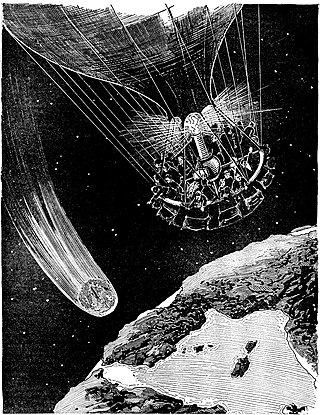
Comets have appeared in works of fiction since at least the 1830s. They primarily appear in science fiction as literal objects, but also make occasional symbolical appearances in other genres. In keeping with their traditional cultural associations as omens, they often threaten destruction to Earth. This commonly comes in the form of looming impact events, and occasionally through more novel means such as affecting Earth's atmosphere in different ways. In other stories, humans seek out and visit comets for purposes of research or resource extraction. Comets are inhabited by various forms of life ranging from microbes to vampires in different depictions, and are themselves living beings in some stories.

The following outline is provided as an overview of and topical guide to science fiction:
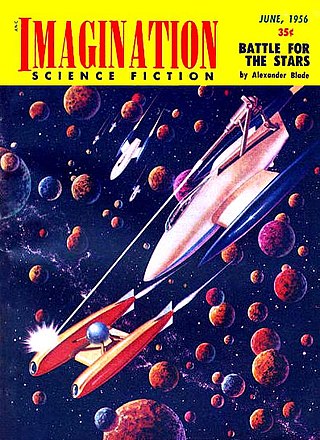
Space opera is a subgenre of science fiction that emphasizes space warfare, with use of melodramatic, risk-taking space adventures, relationships, and chivalric romance. Set mainly or entirely in outer space, it features technological and social advancements in faster-than-light travel, futuristic weapons, and sophisticated technology, on a backdrop of galactic empires and interstellar wars with fictional aliens, often in fictional galaxies. The term does not refer to opera music, but instead originally referred to the melodrama, scope, and formulaicness of operas, much as used in "horse opera", a 1930s phrase for a clichéd and formulaic Western film, and "soap opera", a melodramatic television series. Space operas emerged in the 1930s and continue to be produced in literature, film, comics, television, video games and board games.



















